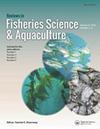Spatial Subdivision and Genetic Diversity in Populations on the East and West Coasts of Australia: The Multi-Faceted Case of Nautilus pompilius (Mollusca, Cephalopoda)
引用次数: 17
Abstract
The fragmented distribution of Nautilus pompilius and its biology suggest there will be significant genetic divergence and spatial subdivision between east and west Australian populations. Samples were collected from the northern Great Barrier Reef, the Coral Sea, and the Scott Reef off Western Australia. Phylogenetic trees and a minimum spanning tree were developed from these data to elucidate evolutionary relationships. These data demonstrate significant evolutionary separation of each of the three populations into strongly supported discrete clades matching geographic stratification. Within each of the discrete populations, genetic variation is evident. Strong inter-population variation is evident, with discrete geographic clades being recognized for each extant group. The distinct spatial subdivision between east and west Australian populations of Nautilus are related to geographic and physical isolation over evolutionary time, and this has important fisheries management implications. The distinct geographic patterns of genetic structuring demonstrated by these data indicate the existence of discrete eastern and western Australian management units, and as such, these Nautilus populations should be managed discretely, as each has a high conservation value containing unique genetic variation.澳大利亚东西海岸种群的空间细分与遗传多样性——以鹦鹉螺(软体动物,头足纲)为例
鹦鹉螺的碎片化分布及其生物学表明,东、西澳大利亚种群之间将存在显著的遗传分化和空间细分。样本是从大堡礁北部、珊瑚海和西澳大利亚的斯科特礁收集的。系统发育树和最小生成树是由这些数据来阐明进化关系。这些数据表明,三个种群中的每一个都有显著的进化分离,形成了与地理分层相匹配的有力支持的离散枝。在每一个离散的种群中,遗传变异是明显的。很强的种群间变异是明显的,每个现存的群体都可以识别出离散的地理分支。东澳大利亚和西澳大利亚鹦鹉螺种群之间明显的空间细分与进化过程中地理和物理上的隔离有关,这对渔业管理具有重要影响。这些数据所显示的遗传结构的独特地理模式表明,澳大利亚东部和西部存在离散的管理单位,因此,这些鹦鹉螺种群应该分开管理,因为每个种群都具有很高的保护价值,其中包含独特的遗传变异。
本文章由计算机程序翻译,如有差异,请以英文原文为准。
求助全文
约1分钟内获得全文
求助全文

 求助内容:
求助内容: 应助结果提醒方式:
应助结果提醒方式:


